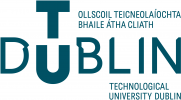© Pint of Science, 2025. All rights reserved.
Join us at The Oyster Tavern on Monday 22nd May at 7pm! In this "Atoms to Galaxies" event, talks include multi-colour lasers, black holes and sustainable methods for chemical synthesis.
Please note this event takes place on the first floor.
Please note this event takes place on the first floor.
More sustainable methods for chemical synthesis
Dr Peter Byrne
(Lecturer in organic chemistry, UCC)
The approaches used to make many of the chemicals that are commonly used today involve production of large amounts of waste. We aim to develop new methods for production of chemical products that require much less material and produce much less waste. I will describe how we develop these new methods by focusing on (i) utilisation of waste products such as carbon dioxide as the starting materials for production processes, (ii) developing more efficient production processes, (iii) developing methods that do not require use of solvents, (iv) using materials that can be produced sustainably.
Hearts of darkness: looking for black holes within the Milky Way
Dr Mark Kennedy
(Postdoctoral Researcher)
Black holes represent the final stage of evolution for the most massive stars in our Galaxy. Once only mathematical curiosities, we now know that these objects are produced when massive stars reach the final moments of their lives and undergo a supernova. However, we are faced with a serious challenge when studying bleck holes - as how do we find objects that emit no light? Come with me on a journey, as we discuss the state-of-the-art technology astronomers are using for find these exotic (and yet boring!) objects.
The Power of Multi-Color Lasers: Advancing Communication and Precision
S. Hadi Badri
(Postdoctoral Research Fellow)
A laser is a source of light with a single color. You can find lasers in DVD players and bar code scanners. It is used in distance measurement and also in spectroscopy to identify the kind of gases, solids, or liquids something is made of. Moreover, lasers are crucial components in telecommunication. When we have a light source that can generate multiple colors rather than just one, our capacity for sending data or the accuracy of our measurements increases dramatically. Such a light source is called a "frequency comb generator" and I am working on miniaturizing these sources.
Pulsars, the Lighthouses of the Universe
Jane Dooley
(Science facilitator, Blackrock Castle Observatory)
Pulsars are some of the strangest objects in the Universe. They are a type of neutron star that can be as small as a town and rotate hundreds of times a second. We will learn about the discovering of these pulsars in 1967, what we have learned about them since and why these tiny transients are important.
Map data © OpenStreetMap contributors.




